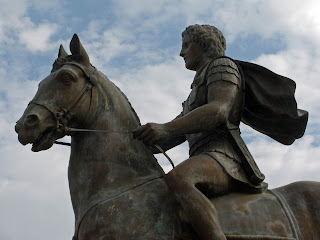After their fierce battle at Mount Haemus (modern Shipka Pass in Bulgaria 1150 meters ), i.e. the major thoroughfare from Philippopolis to Gabrovo and Veliko Tarnovo, the road was open for the Macedonians.
Alexander’s next goal was the Triballi who lived south of the Danube . On his way north, he crossed the Lyginus River
At this point, Alexander was only three days' march away from the Danube . On his way through the broad fertile Danube plain, he captured several Triballi strongholds before reaching Odessos, modern Varna on the Black Sea . Today, these flats are covered with endless fields of sunflowers, and colorful patches among the gold of the harvested cornfields. One may wonder whether sunflowers were cultivated back in antiquity but it turns out that the plant is native to North America and thus arrived much later.
Odessos is one of the many colonies founded by Miletus around 585-550 BC which functioned according to the Greek administrative pattern (see: The many colonies of Miletus). It was an important trading hub exchanging goods with Asia Minor and the Greek islands as well as with the Thracians living inland. Odessos proudly resisted the siege of Philip in 339 BC but on this occasion was taken by Alexander. The town flourished later on when Lysimachos ruled over Thracia
Today’s treasure of Varna is to be found in its Archaeological Museum
This is just a parenthesis as Alexander marched on to dislodge the Triballi and the Thracian tribes who with their wives and children had taken refuge on Peuce Island at the mouth of the Danube .


No comments:
Post a Comment